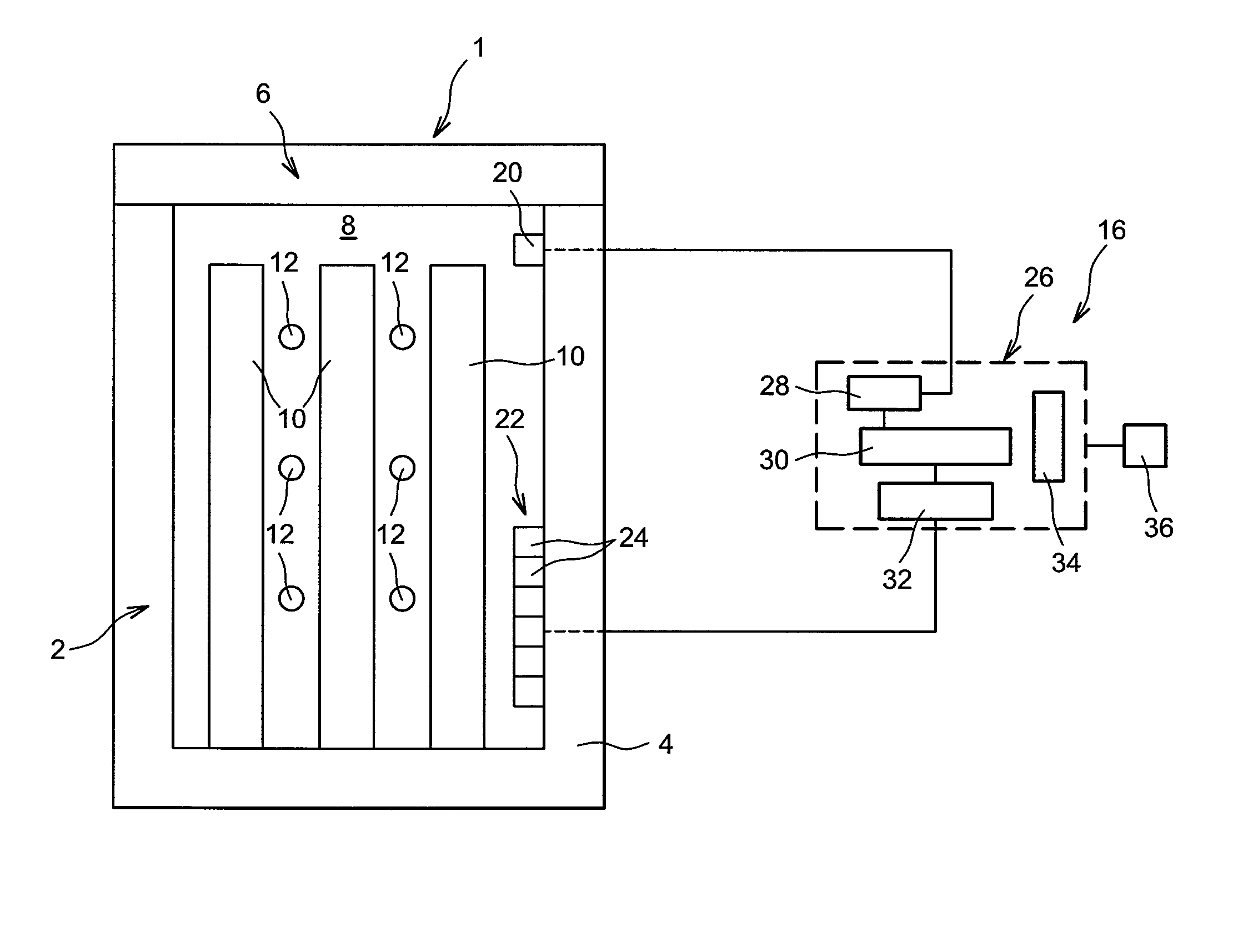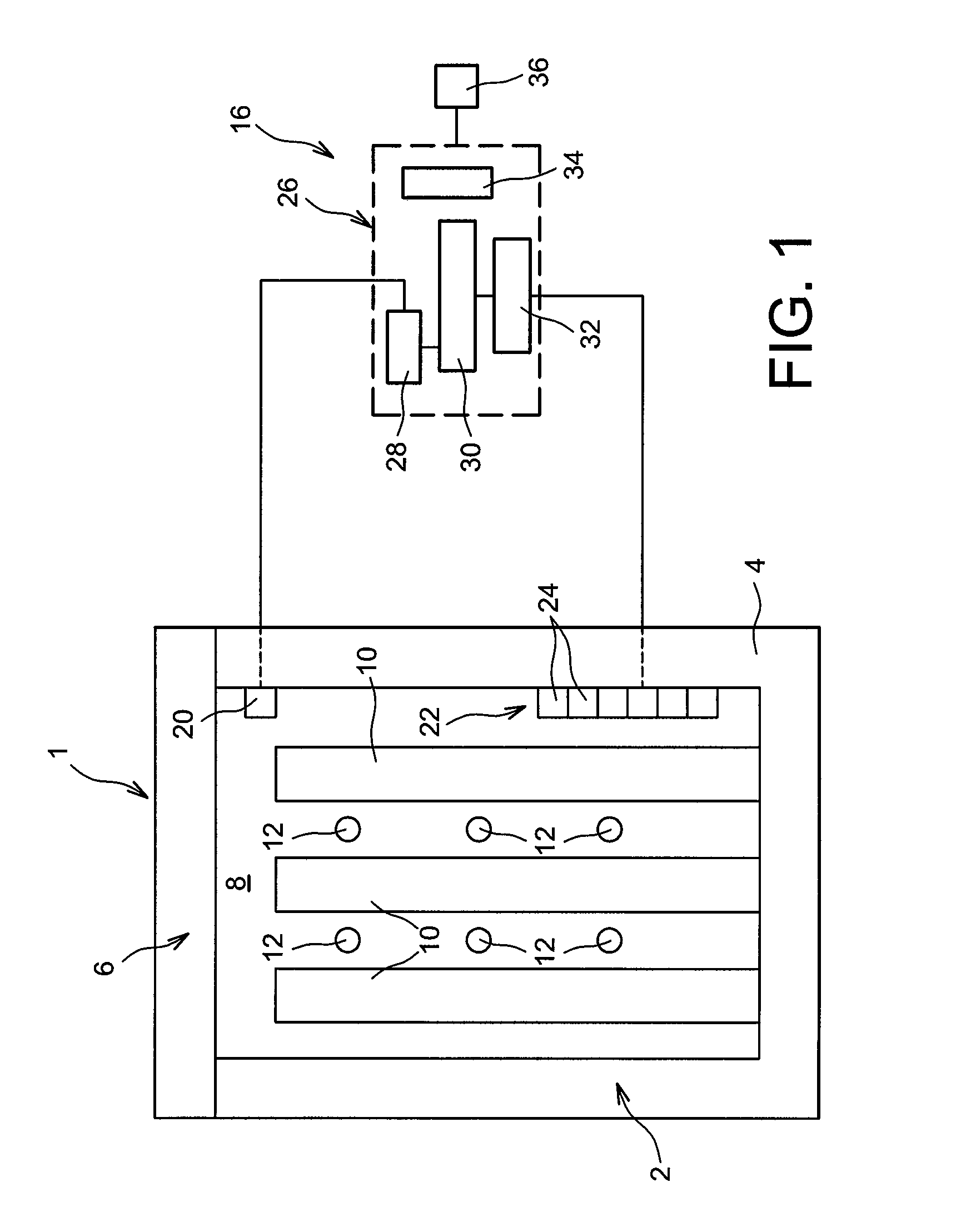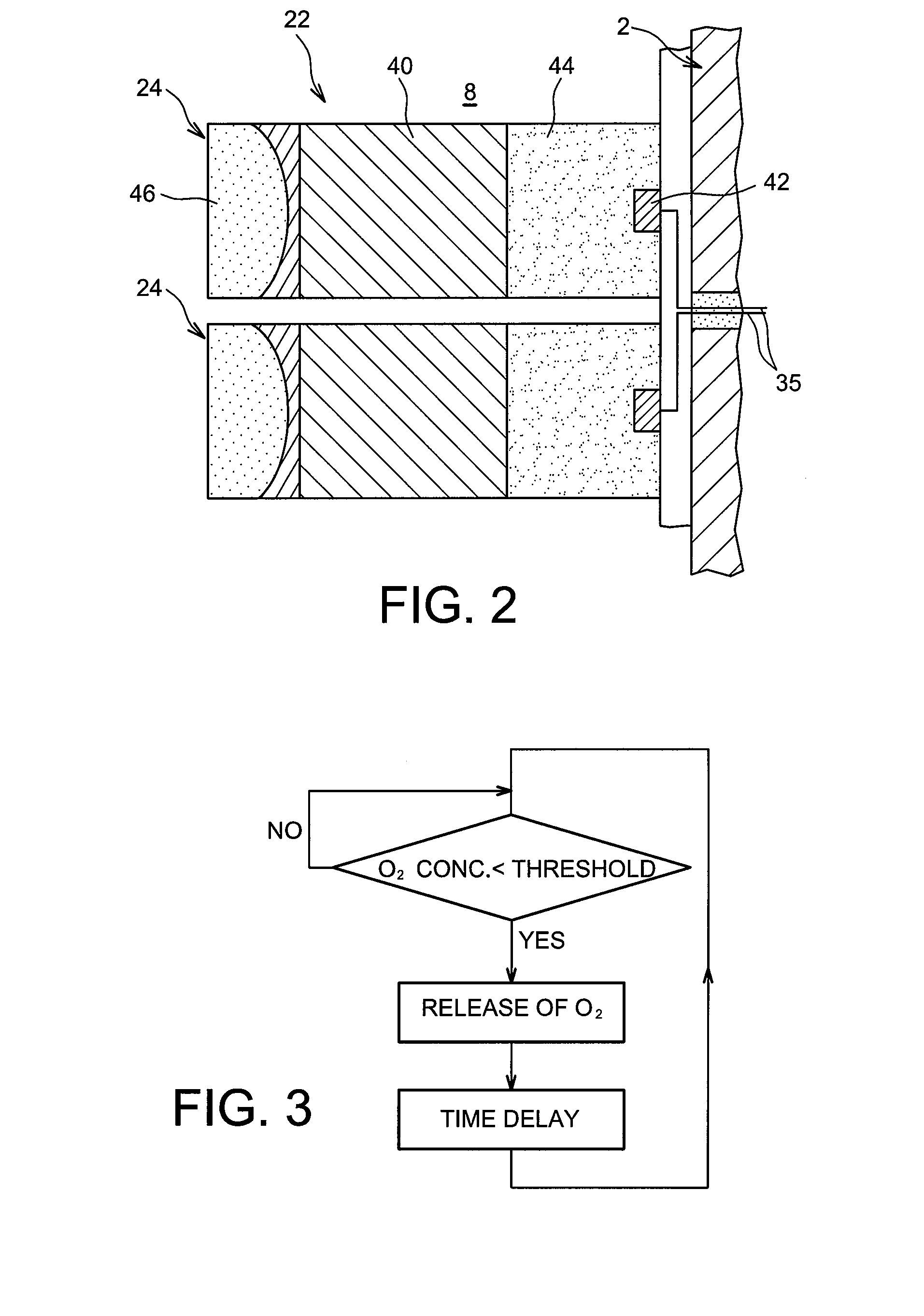Device for transporting and/or storing radioactive materials and for the controlled release of oxygen in an enclosed housing
a radioactive material and enclosed housing technology, applied in the direction of liquid chemical processes, separation processes, instruments, etc., can solve the problems of over-oxygenation, explosiveness and pressure rise, recurrence, and excessive hydrogen, so as to reduce the risk of over-oxygenation
- Summary
- Abstract
- Description
- Claims
- Application Information
AI Technical Summary
Benefits of technology
Problems solved by technology
Method used
Image
Examples
Embodiment Construction
[0058]Firstly, with reference to FIG. 1, a device 1 for transporting and / or storing radioactive materials, also referred to as a container, can be seen, in the form of a preferred embodiment of the present invention.
[0059]Overall, the device 1 comprises a lateral body 2, a base 4 optionally integral with the body 2, and a cover 6 mounted in a fixed manner thereon. These members jointly form a closed enclosure 8, wherein the radioactive materials 10, such as waste containers, are housed.
[0060]The device 1 comprises a system for securing the closed enclosure 8, this system firstly comprising active means, including a plurality of catalysts 12 for recombining oxygen and hydrogen into water, and a desiccant agent (not shown). As represented in FIG. 1, the catalysts 12 are preferably distributed in the enclosure 8, so as to avoid local hydrogen concentrations.
[0061]Furthermore, the system for securing the closed enclosure comprises a device 16 for the controlled release of oxygen in the ...
PUM
 Login to View More
Login to View More Abstract
Description
Claims
Application Information
 Login to View More
Login to View More - R&D
- Intellectual Property
- Life Sciences
- Materials
- Tech Scout
- Unparalleled Data Quality
- Higher Quality Content
- 60% Fewer Hallucinations
Browse by: Latest US Patents, China's latest patents, Technical Efficacy Thesaurus, Application Domain, Technology Topic, Popular Technical Reports.
© 2025 PatSnap. All rights reserved.Legal|Privacy policy|Modern Slavery Act Transparency Statement|Sitemap|About US| Contact US: help@patsnap.com



